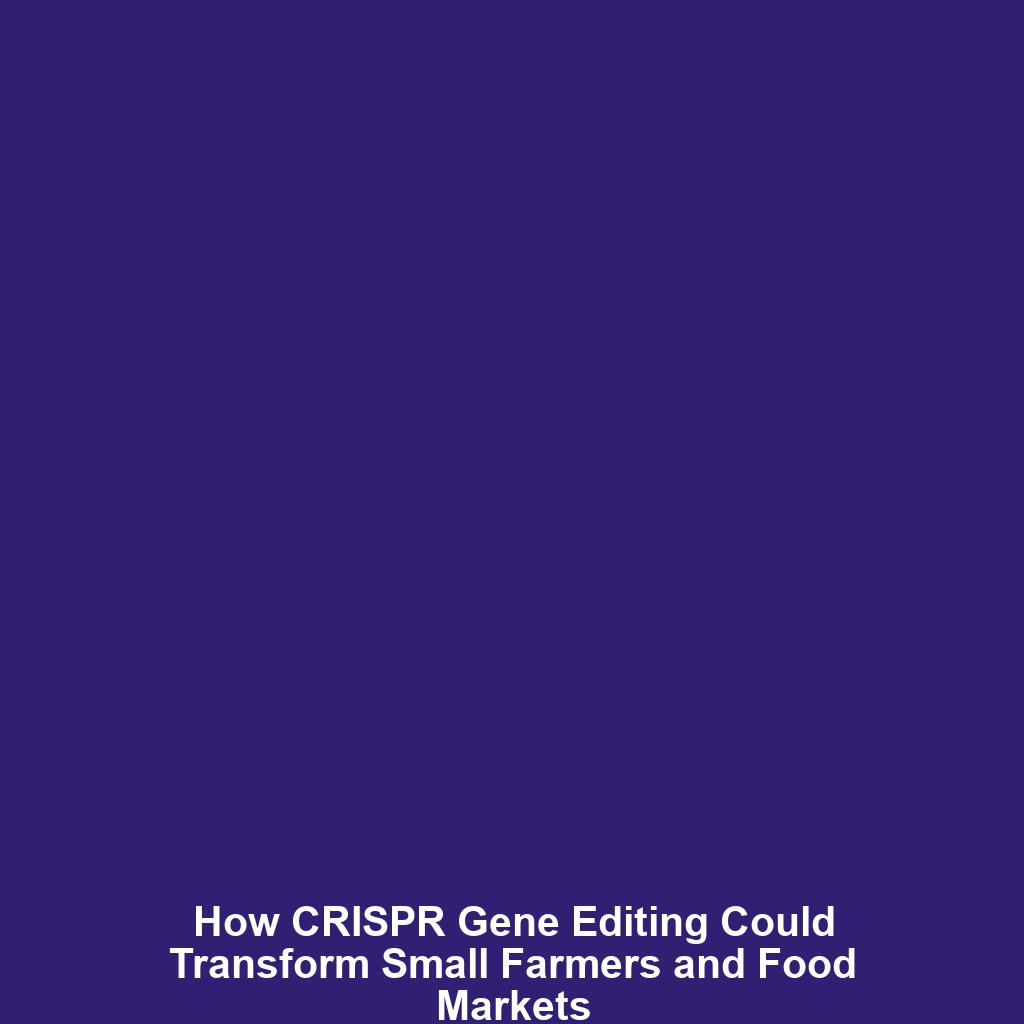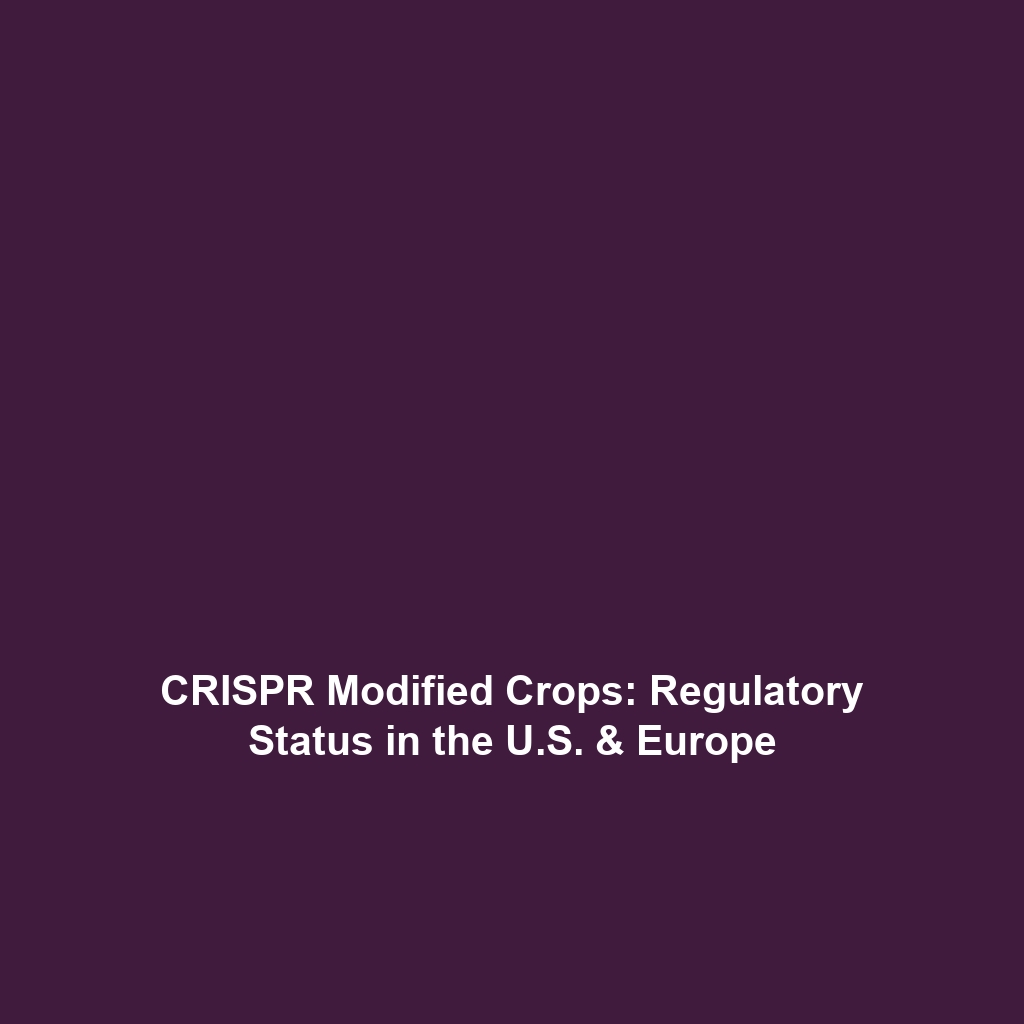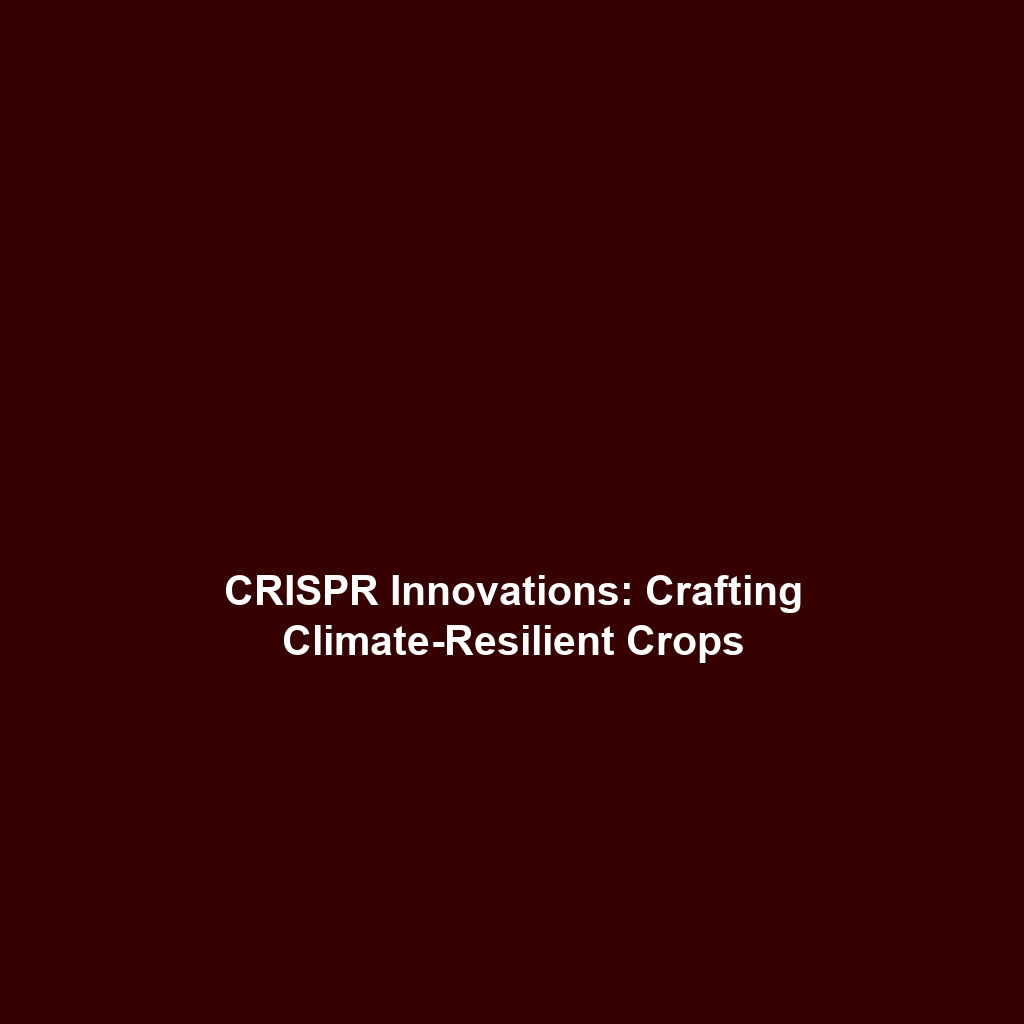The Impact of CRISPR Gene Editing on Small-Scale Farmers and Global Food Markets
CRISPR gene editing represents a revolutionary technology with the potential to transform agriculture, particularly for small-scale farmers. This innovation not only enhances crop yields but also addresses the pressing challenges of food security and sustainability. Understanding how CRISPR can influence small-scale farmers and global food markets is vital as we face increasing pressures from climate change and population growth. This article explores the implications of CRISPR technology and its significance in modern agricultural practices.
Key Concepts in CRISPR Gene Editing
CRISPR (Clustered Regularly Interspaced Short Palindromic Repeats) is a powerful tool for gene editing that allows for precise alterations in DNA. The major concepts related to its impact on small-scale farmers and global food markets include:
- Genetic Modifications: Utilizing CRISPR to create crops that are disease-resistant and drought-tolerant.
- Improved Crop Yields: Enhancing the productivity of staple crops, which is crucial for food security.
- Accessibility to Technology: Ensuring that small-scale farmers can afford and access CRISPR-based solutions.
Applications and Real-World Uses
The applications of CRISPR in agriculture are profound, especially regarding how it benefits small-scale farmers. Notable examples include:
- CRISPR-Cas9 in Rice: Researchers have developed rice varieties that need less water and are resistant to various pests.
- Improvement of Nutritional Content: Gene editing to enhance the nutritional profiles of crops, supporting better health outcomes.
- Sustainable Practices: Decreasing the need for chemical pesticides through genetically modified pest-resistant plants.
Current Challenges in CRISPR Adoption
While the potential of CRISPR is immense, several challenges exist in its application and study:
- Regulatory Hurdles: Variabilities in regulations across countries can impede the adoption of CRISPR crops.
- Ethical Concerns: Public perception about genetically modified organisms (GMOs) continues to be a significant barrier.
- Cost of Technology: High costs associated with developing CRISPR products may limit accessibility for small-scale farmers.
Future Research and Innovations
Future research in CRISPR technology aims to further lower the costs and simplify the processes involved in gene editing. Some promising innovations include:
- Next-Gen CRISPR Techniques: Development of more efficient gene editing tools that require less technical expertise.
- Integration with AI: Using artificial intelligence to optimize gene editing outcomes based on phenotypic data.
- Focus on Crop Diversity: Research aimed at preserving biodiversity while enhancing agricultural productivity.
Conclusion
The implications of CRISPR gene editing for small-scale farmers and global food markets are transformative, offering significant enhancements to crop resilience and productivity. As the technology continues to evolve, it is imperative for researchers, policymakers, and farmers to collaborate to navigate the challenges of adoption and ensure equitable access. Stay informed and take action by exploring related topics such as food security and sustainable agriculture.


